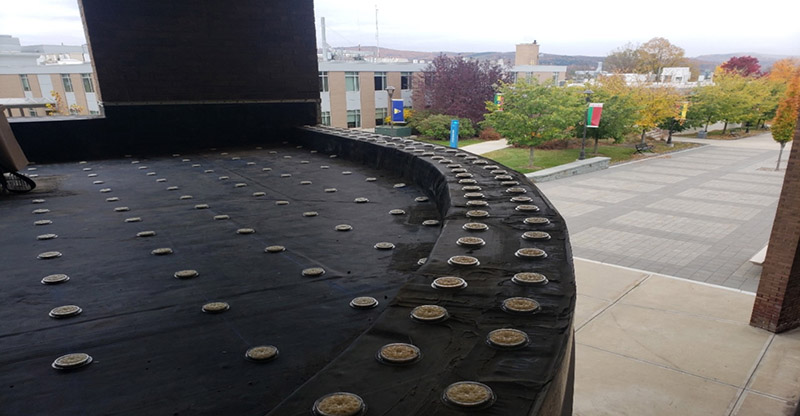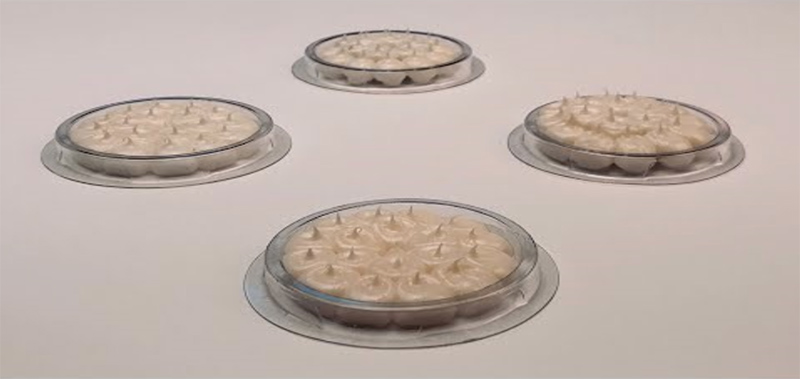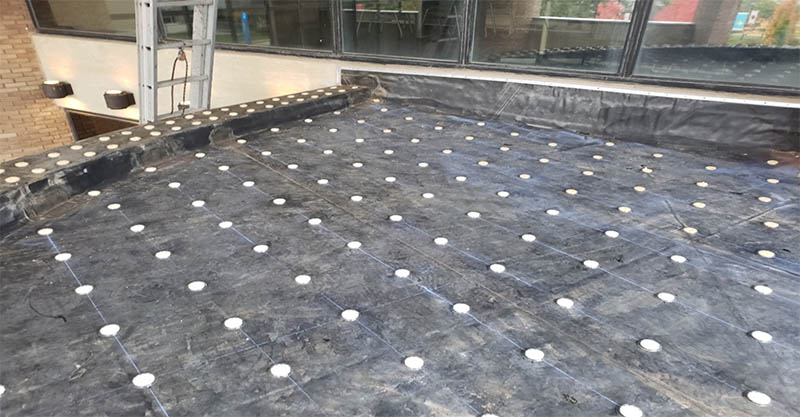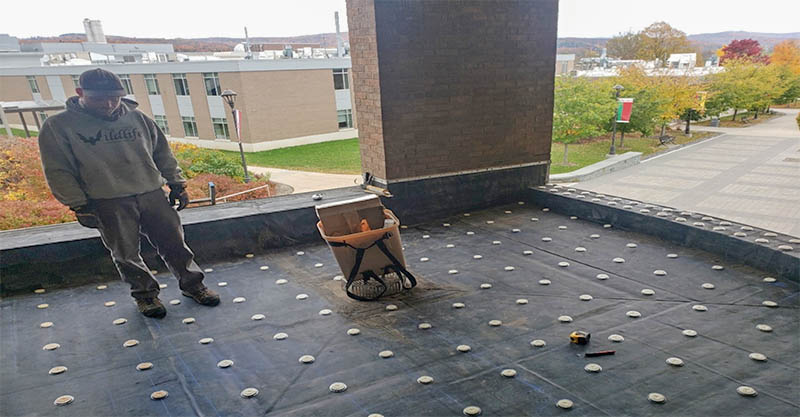Installing Bird Deterrents on the SUNY Cobleskill Library
Need a bird deterrent solution for your property? Call Us: (518) 512-0400
Large buildings with many landing areas, such as those on college campuses, can often encounter problems with birds. A flock might choose a rooftop or sheltered landing as a safe place to roost, or even to build a nest. This can lead to accumulated damage and stains on the building exterior. It is important to address the bird nuisance problem before the damage snowballs out of control.
Installing a bird deterrent will help keep flocks away from your building. There are a variety of deterrents to choose from, but not all are appropriate for every rooftop or landing. At Hudson Valley Wildlife Solutions, we have experience with a wide range of bird deterrent options. We can help you choose and install the best one to fit your needs.
Our alma mater, SUNY Cobleskill, hired us to clean up and prevent further bird damage to campus buildings. At the modern Van Wagenen Library, several species of bird had made a habit of perching on landings around the building. They especially liked a few covered areas that shielded them from the elements. These landings were right outside library windows, and the birds were becoming a nuisance to students and staff inside. We had to find a low-profile bird deterrent that would keep birds away without blocking the view through the windows.

Choosing A Bird Deterrent for Your Building
There are a variety of bird deterrent solutions on the market. These devices affect the birds’ senses and make the area around them unappealing. Popular options include sonic repellers, decoys, lasers, and strobes. Such deterrents, while effective, may be difficult to install near electrical devices or moving equipment. They are also often permanent installations, which can be visually distracting. Owing to its prominence on campus, the Van Wagenen Library at SUNY Cobleskill required a low-profile solution.
We opted to install “Bird Barrier Optical Gel™ Multisensory Bird Deterrents,” on top of the landings. These gel dishes work well on a variety of surfaces and can be used on both residential and commercial properties. The optical gel triggers multi-sensory responses for birds in a nontoxic, harmless way. The sight, the scent, and the feeling of touching the gels are all offensive to many species of birds. After gel dish installation, the birds quickly learn to avoid them.

The multisensory bird deterrents target the senses as follows:
- Sight: Optical gel emits a UV light that human eyes cannot detect but birds can. The light radiates up from the dish, making the air above the gel look like an open flame. The birds’ survival instincts kick in upon viewing the gels. They will usually avoid the “flame” and fly away from the landing area.
- Smell: The gel contains peppermint oil and citronella. The scent is mild and even pleasant to humans, but birds find it repulsive. These scents mask the pheromones that birds use to identify their home. They will not remember that they had previously spent time on the surface.
- Touch: For the most stubborn of birds who might ignore the sight of flame and the unpleasant smell, the optical gel is quite sticky. The birds will find it unpleasant to stand on and will be unlikely to return to their former perch.
The optical gel comes in filled dishes that can be attached to the surface with a small amount of silicone adhesive. The gel is effective for about two to four years, depending on weather exposure and other environmental factors. The gel is an off-white color when it is installed. Over time and exposure to the elements, it changes color to a dark brown. This signals that it is no longer emitting the UV light and must be replaced.

These bird deterrents are a great solution in places where other options might be too intrusive or unsightly. The gels fit on top of building signs, balconies, and nooks and crannies in architecture. When placed on a vertical surface, they can be an effective deterrent against woodpeckers. The optical gel is also eco-friendly, with all the ingredients regarded as safe by the Environmental Protection Agency.
How to Install Multisensory Bird Deterrents
Before installing the optical gels, we had to thoroughly clean the building surfaces with a specialized cleaner. This removed all the bird droppings, as well as pheromones that the birds had used to identify the site as a safe place to perch. We then went through a second round of cleaning the building with a bleach solution. This sanitized the area and eliminated any parasites that might have survived the first cleaning.
We prepared the gel dishes with the silicone adhesive, then laid them out in a grid pattern over the problem areas on the building. To optimize the effectiveness of the gels, we placed them ten inches apart, in grids. While a bird could conceivably fit on the landing between the gel dishes, the appearance and smell would make it too unappealing for them to stay there. Fortunately, we found no evidence of nighttime roosting or birds’ nests around the library. Such a finding would have required the gels to be closer together to be effective, and birds such as pigeons can create significant roosting problems.

After we installed the optical gels, the flocks of birds began avoiding the Van Wagenen Library. A few birds attempted to perch between the gels at first. With three senses affected by the deterrents, they soon gave up and flew elsewhere. The gels are so low-profile that students and professors walking around the library do not notice them. After a couple of years, of course, the gels will need to be replaced to continue being effective. In the meantime, birds around the building will be scarce, much to the delight of the campus community.
Read our article on how generally to combat pigeon infestations here.
Do you need help deterring a flock of birds from your property? Contact Hudson Valley Wildlife Solutions today so we can discuss your options.

